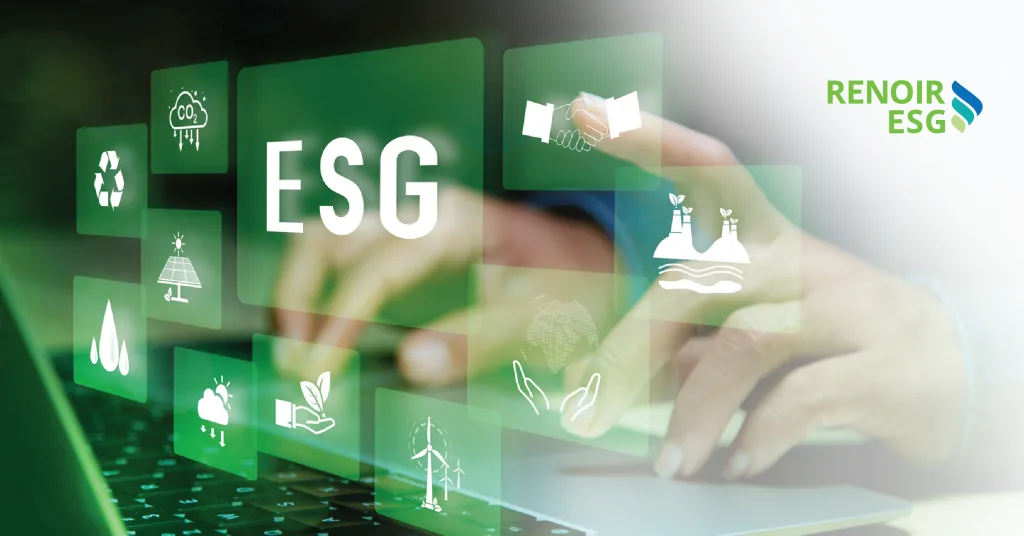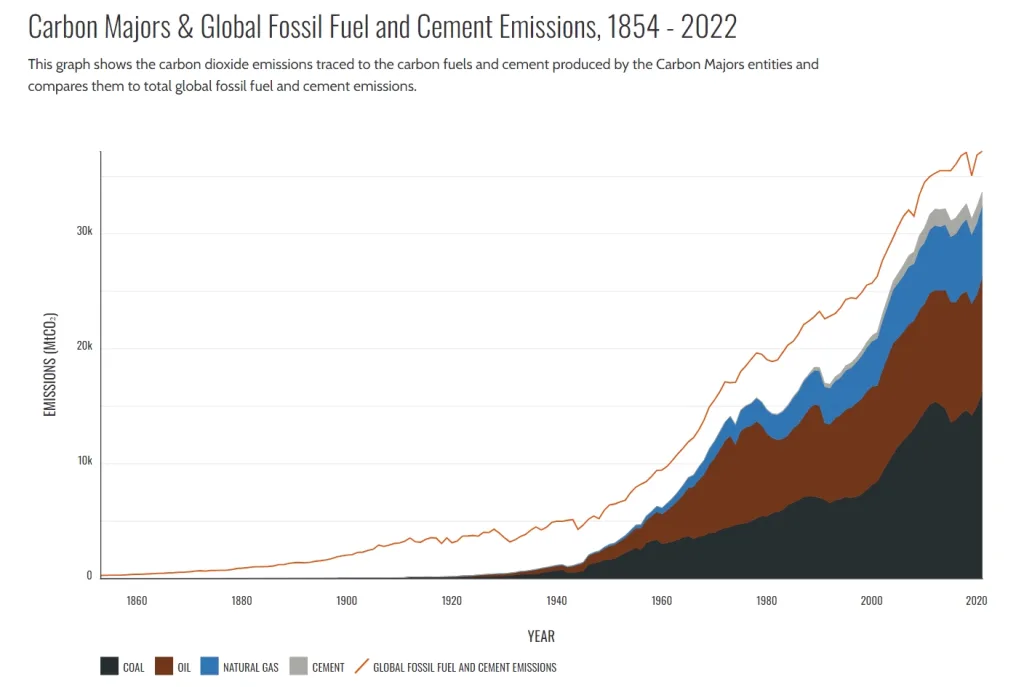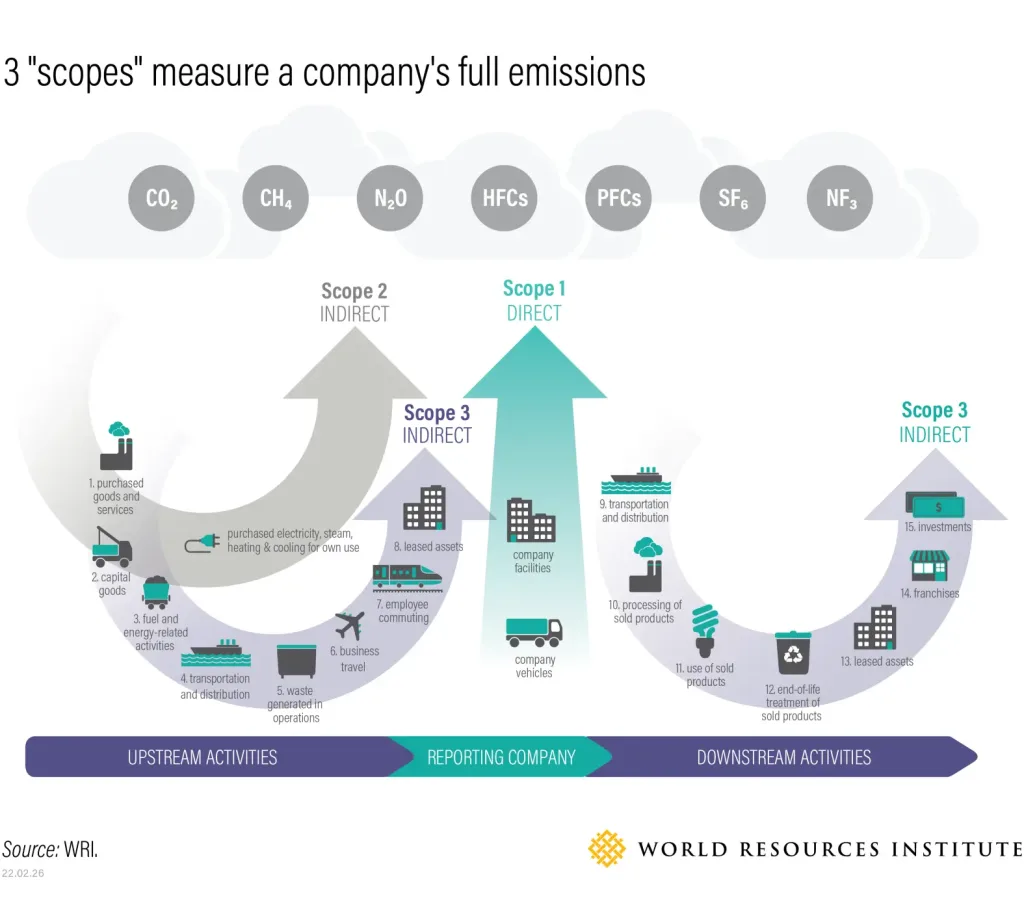At a Glance:
- From 2016 to 2022, 80% of global carbon dioxide emissions came from just 57 companies.
- This data underscores the urgent need for comprehensive and rigorous greenhouse gas (GHG) reporting across all industries.
- Reporting greenhouse gas emissions can make businesses more transparent, and sustainable by identifying inefficiencies and reducing operating costs, while meeting climate-related regulations.
Greenhouse gas (GHG) emissions have become a critical metric in modern business operations, extending far beyond environmental concerns. A 2024 report by Carbon Majors Database, compiled by world-renowned researchers, revealed that just 57 companies in the fossil fuel and cement sectors are responsible for 80% of global CO2 emissions since the Paris Agreement. In 2022 alone, coal, oil, natural gas and cement production together account for some 30,000 mega tonnes of carbon dioxide emitted worldwide. This highlights the concentrated impact of corporate activities on climate change.
Caption: The production of coal, oil, natural gas and cement continue to make up an overwhelming share of the world’s carbon dioxide emission. (Source: Carbon Major Database)
This stark reality demonstrates why emissions tracking has transformed from a voluntary environmental initiative into a fundamental business imperative.
But what exactly constitutes GHG reporting, and why should businesses across all sectors – not just major emitters – pay attention?
GHG Reporting – Understanding the concept.
Greenhouse gas (GHG) reporting is the process of documenting the amount of greenhouse gases that are emitted by a business, organisation, or country.
This focus on emissions reporting serves multiple business objectives:
It enables companies to develop science-based targets aligned with global climate goals, particularly the aim to limit warming to 1.5°C above pre-industrial levels.
Through platforms like the Carbon Disclosure Project (CDP), companies can systematically collect,analyse,track and report corporate GHG emissions data, providing transparency to stakeholders and investors.
Standardised reporting guidelines, such as IFRS S2 Climate-related Disclosures, allow companies to communicate their climate strategies to investors while staying competitive in a carbon-conscious market.
Key aspects of GHG Reporting includes:
Greenhouse Gases: The Kyoto Protocol covers seven greenhouse gases that are carbon dioxide (CO2), methane (CH4), nitrous oxide (N2O), and four fluorinated gases – hydrofluorocarbons (HFCs), perfluorocarbons (PFCs), sulfur hexafluoride (SF6), and nitrogen trifluoride (NF3).
To standardise reporting on gases with different global warming effects, emissions are measured in carbon dioxide equivalents (CO2e), which reflects the global warming potential of each gas relative to CO2.
At its core, GHG reporting is a systematic approach to measuring and disclosing an organisation’s carbon footprint across three key scopes:
- Direct emissions from owned operations (Scope 1),
- Indirect emissions from purchased energy (Scope 2), and
- Emissions throughout the value chain (Scope 3).
Reporting Standards: The GHG Protocol is a widely used standard for GHG accounting and reporting. It provides a structured approach for categorising emissions sources across different scopes. The GHG protocol operates on principles of relevance, completeness, consistency, transparency, and accuracy.
What does your GHG report tells you about your organisation?
This comprehensive approach to emissions tracking delivers multiple strategic advantages. For businesses, it serves as a powerful tool for:
Identify operational inefficiencies and potential cost savings
GHG reporting provides data on emissions, helping organisations understand their impact on the environment, identify the biggest emitters and how to best meet targets. Organisations can identify areas for improvement, leading to more sustainable practices, cost savings and operational efficiencies.
Meet growing investor demands for climate risk transparency
Responding proactively and transparently to climate risk by reporting GHG emissions can enhance an organisation’s reputation with customers, suppliers, investors and other stakeholders. This transparency shows that the organisation is delivering on its sustainability claims. Transparency is also critical for investors, who increasingly seek reliable data on corporate emissions and use it to make investment decisions.
Strengthen competitive positioning in an increasingly carbon-conscious market
Measuring and reporting greenhouse gas emissions demonstrates an organisation’s commitment to its environmental impact, as concern about climate change grows. This data highlights vulnerabilities to climate change, enabling organisations to proactively address challenges and improve climate resilience.
Ensure compliance with evolving regulatory requirements
Many countries and regions have mandatory GHG reporting programs. These regulations often require that businesses, organisations, or countries whose emissions exceed a certain level to report their emissions on a recurring basis. In addition, many jurisdictions are working on new regulations to advance climate action.
For instance, many governments have mandatory GHG reporting framework and system in place. Examples include:
- The EPA’s Greenhouse Gas Reporting Program (GHGRP) mandates emissions reporting requirements, while the SEC’s climate change disclosures focus on the financial risks associated with climate change. In addition, the Sustainability Accounting Standards Board (SASB) provides industry-specific standards for companies to disclose ESG information, including greenhouse gas emissions data, that investors consider relevant to their decisions.
- European Union: EU Corporate Sustainability Reporting Directive (CSRD), this requires companies to report their sustainability performance, including detailed GHG emission data. The first round of reporting under the CSRD will take place in 2025, with disclosures due for the 2024 financial year for certain companies that fall within the scope of the directive.
- United Arab Emirates (UAE): All companies in the UAE must track and report their GHG emissions from 2025 under the National Climate Change Plan and UAE Vision 2031.
This includes:
Scope 1 (direct emissions)
Scope 2 (indirect energy use)
Scope 3 (supply chain and waste)
Threshold: Reporting mandatory for entities emitting ≥500,000 tpa (Others can volunteer)
- Australia: The National Greenhouse and Energy Reporting Scheme (NGERS) and Australian Public Service (APS) Net Zero Emissions Reporting Framework.
- Japan: Greenhouse Gas Emissions Reporting System is mandated by the Ministry of the Environment, requiring businesses to report their GHG emissions annually, focusing on large emitters and specific sectors.
Build resilience against future climate-related disruptions through continuous tracking.
Consistent GHG reporting helps organisations track emissions and monitor progress towards sustainability goals. It informs decisions related to resource management, operational improvements and supply chain optimisation. For example, understanding which areas of operations produce the most emissions helps organisations focus mitigation strategies.
Renoir ESG Can Help You.
RenoirESG will be a critical partner for sustainability executives, offering comprehensive guidance to enhance data collection, develop standardised metrics, and implement robust reporting strategies.
By facilitating systematic data collection and alignment with established frameworks like the GHG Protocol, we work with clients to create comprehensive GHG inventories. Our approach focuses on driving early stakeholder engagement, ensuring that GHG reporting becomes an integrated, collaborative process that delivers actionable insights across the organisation.
Ready to take the first step to develop a tailored emissions tracking?














